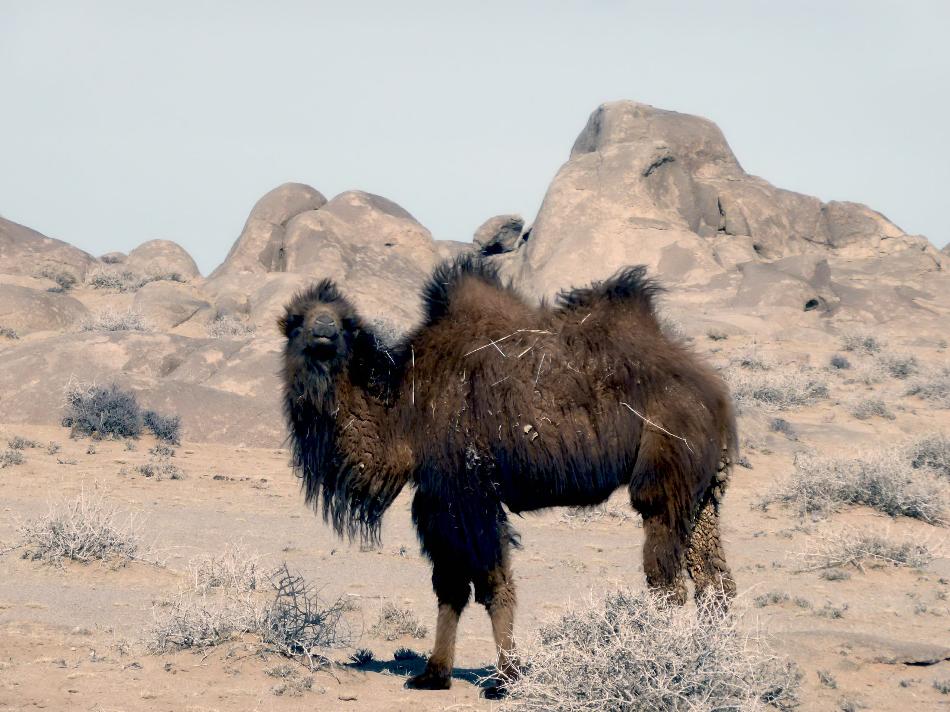The Bactrian camel has two humps that hold fat, not water, to provide energy during the winter months. They can go for days without drinking, conserving water in their body cells and stomach. Living in areas that are mostly grasslands, this camel can run as fast as a horse. A pillow-like callus under the chest allows them to rest comfortably in the hot sand.
The domesticated Bactrian camel which is the majority has served as a pack animal in inner Asia since ancient times. With its tolerance for cold, drought, and high altitudes, it enabled travel such as the caravans of the Silk Road. The wild form has dwindled to a population estimated at 800 in October 2002 and has been classified as critically endangered.
Its range in the wild is restricted to remote regions of the Gobi and Taklamakan Deserts of Mongolia and China, migrating from the desert to rivers in Siberia during winter. A small number of wild Bactrian camels still roam the Mangystau Province of southwest Kazakhstan and the Kashmir valley in India. Feral herds of Bactrian camels are found in Australia.
